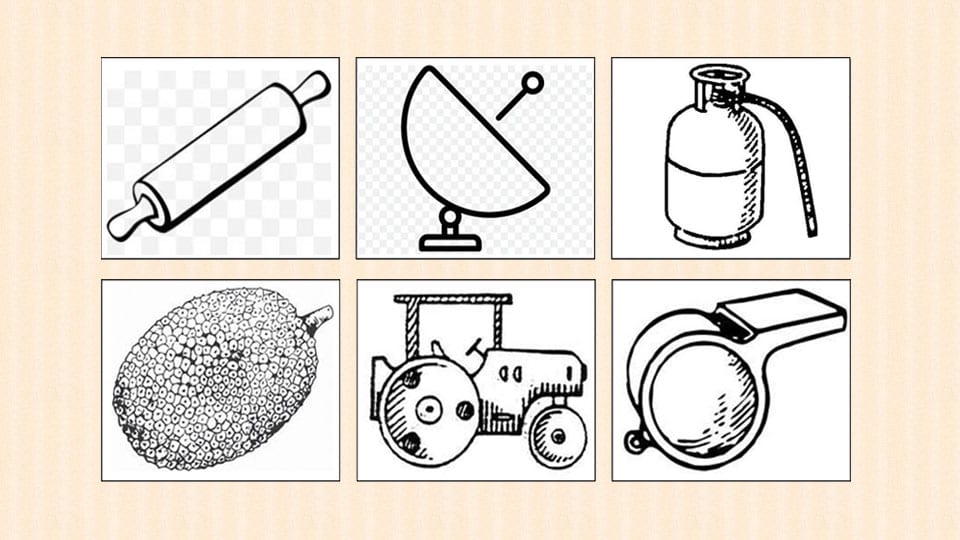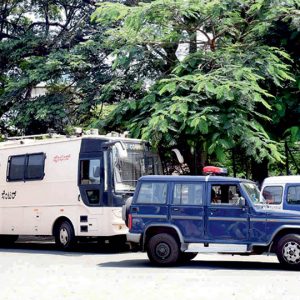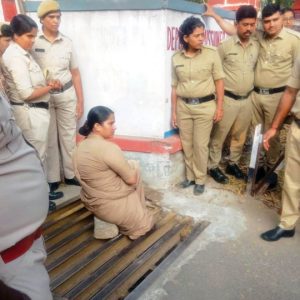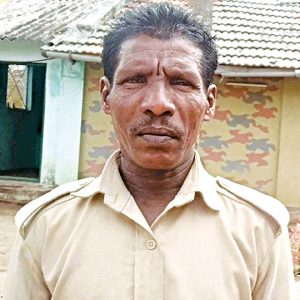From road roller to chapathi roller, gas cylinder to CCTV camera and from chappals to jackfruits we have it all
Mysuru: Every election season ushers in a slew of party symbols that range from the mundane to the outlandish — an autorickshaw, road roller, jackfruit, CCTV camera, chapathi roller, whistle, a dish antenna and even chappals.
These are some of the selections by Independent candidates who are contesting the forthcoming Lok Sabha elections. The Election Commission has allotted the symbols based on the list given by the candidates. While some of the symbols can easily be identified by voters as they are part of their mundane life, some are unique like one Independent candidate has got chappals. Who can forget the symbol of a jhaadu, or broom, floated by Aam Aadmi Party?
An election symbol is a fool-proof way for voters to identify their candidates while maintaining a secret ballot. While National parties and State parties have been allotted permanent symbols by the Election Commission, registered parties and Independent candidates too have to have symbols.
According to the Election Symbols (Reservation and Allotment) Order, 1968, symbols are of two types — either reserved or free. A reserved symbol is a symbol meant for a recognised political party for allotment to candidates set up by that party. A free symbol, on the other hand, is a symbol other than reserved for national and State parties.
Across India, 198 symbols have been approved by the Election Commission that range from a wide variety of items. Interestingly, a large number of candidates have preferred items like sewing machines, fans, pressure cooker in the hope that these symbols will resonate with their voters. This is also a tactic to woo women voters who are in large numbers. Even in last Parliamentary elections in Karnataka, people opted for tumbler, bread toaster, pressure cooker, bucket and chapathi roller. Some of the other popular symbols are sofas, almirahs, letter boxes, and gas cylinder.
Like a woman independent candidate from Mysuru-Kodagu constituency has got a gas cylinder, another male candidate has got a sewing machine. These symbols, as candidates say, can be easily identified and they can at least help in garnering some votes, if not ensuring victory.
Going by the modern times, independent candidates have got air-conditioners, diamonds, pressure cooker, television and whistle as symbols.
An independent candidate in Hassan constituency has got a road roller and another candidate has got a dish antenna.
Interestingly, one candidate in Chamarajanagar has got jackfruit that is grown in abundance in the region and another candidate has got a helicopter. Other notable symbols secured by candidates include chapathi roller, helmet, CCTV camera, baby walker and bat.
So, how these symbols are chosen? Election officers told Star of Mysore that rules laid down by the Election Commission are strictly followed. Symbols associated with caste, religion and those inciting communal tensions and violence are not allotted. While filing nominations, the independent candidates are asked to select three symbols based on preferential order in a prescribed format.
After screening the symbols, Election Officers allot the symbols and take care of duplication and similarities as two symbols in one constituency cannot be similar or even closely similar to each other.
So what if candidates submit similar symbols and make a demand for allotment of the same? Like it happened in Mandya where three Sumalathas (Sumalatha, Sumalatha Manjegowda and P. Sumalatha) vied for the same election symbols that were submitted by Sumalatha Ambarish who is in a straight contest with Chief Minister H.D. Kumaraswamy’s son Nikhil Kumaraswamy.
Sumalatha Ambarish had listed out three symbols in order of preferences — coconut farm, farmer blowing a trumpet and a farmer standing near sugarcane field. Surprisingly, in their move to confuse voters, the other Sumalathas too selected similar symbols and had placed a demand with the Election Commission to allot them similar symbols.
The Commission, however, allotted farmer blowing a trumpet to Sumalatha Ambarish, hand cart for Sumalatha, baby walker to Sumalatha Manjegowda and bat symbol to P. Sumalatha.
Election Officers point out that if two candidates in a particular constituency fight for the same symbol, then the Returning Officer can also use a lottery method to allot symbols to them.
While some symbols like the hand of Congress and lotus for BJP have become iconic and indispensable images of the parties, symbols like the ones listed above appear to be products of sheer ingenuity no matter how lame they may be. Their ultimate aim is to attract the attention of voters.








Recent Comments